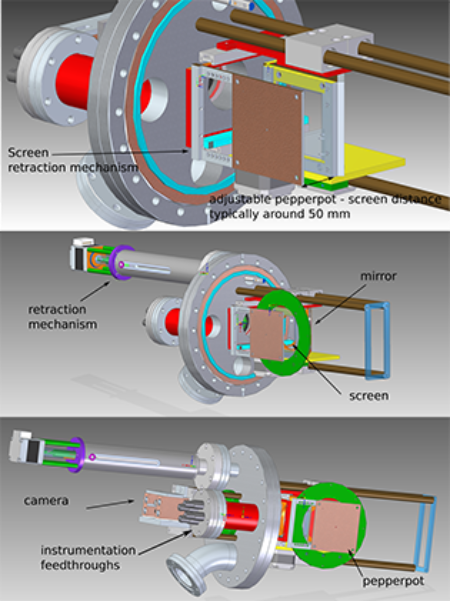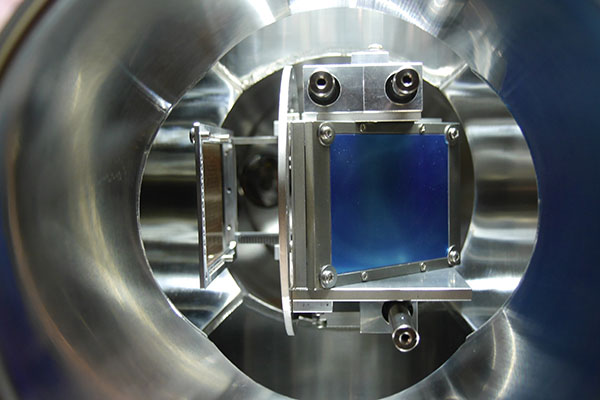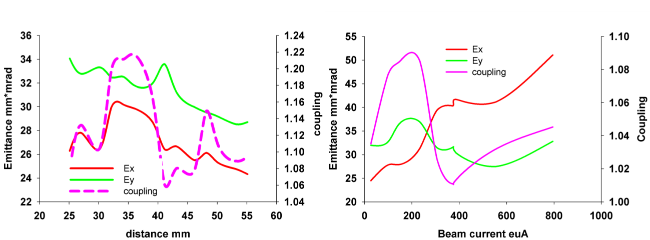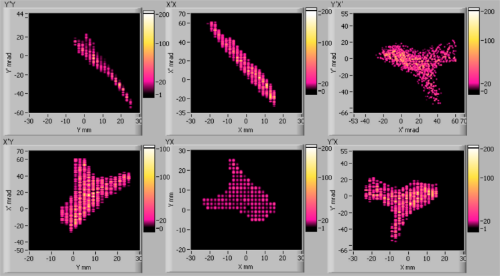Emittance Monitor
The QUASAR Group is involved in beam instrumentation and beam profile measurement at the RIBF, RIKEN, Japan.
Presently, the new superconducting 18 GHz ECR ion source is not regularly used due to the reduced beam current in comparison with the RIKEN Linac operation. In order to investigate this and to optimize the ion source and increase the beam current a new set of diagnostics, control and simulation model is being developed.

The main activity is the development of an online emittance monitor based on the pepperpot method. This device will allow for direct beam emittance and current measurements for the investigation of the ion source dynamics. It has been observed recently that the beam emittance changes with the variation of the beam current as a result of the applied RF power or the gas pressure in the ion source. Different materials to be used as scintillators are examined as well as the possibility to realize a scanning emittance monitor.

In order to have current measurements at the same time with the emittance measurements the pepperpot plate itself is used as a collection electrode for relative current measurements and mostly for current stability investigation.


For the better understanding and investigation of the ion source dynamics and operation, readout and control of many parameters is required. While the main accelerator EPICS based control is available there are certain limitations for specific measurements. Noise dominated channels and slow refresh rates are not appropriate for precision measurement. Towards this goal, custom controls including measuring devices based on ADC’s and custom electronic boards , control devices for the ion source parameters ( RF power, gas flow, beam chopper) and communication with the existing EPICS server for various other parameters are under development.

A simulation model of the operation of the ECR ion source is under development. It will include filed calculation inside the ion source and along the LEBT line. These field maps shall be used for beam tracking and emittance calculation and also compared with the acquired emittance measurements.
Currently involved QUASARs:
Selected Publications:
V. Tzoganis, T. Nagatomo, M. Kase, O. Kamigaito, T. Nakagawa, C.P. Welsch, ‘Development of an online emittance monitor for low energy heavy ion beams’, HIAT 2015, Yokohama, Japan
T. Nagatomo, Y. Kotaka, V. Tzoganis, M. Kase, T Nakagawa, O. Kamigaito, Y. Oshiro, ‘Current developments for increasing the beam intensities of the RIKEN 18-GHz Superconducting ECR ion source’ , ECRIS 2014, Nizhny Novgorod, Russia
T. Nagatomo, V. Tzoganis, M. Kase, T Nakagawa, O. Kamigaito, T. Nakagawa, ‘Development of a pepper-pot emittance meter for diagnostics of low-energy multiply charged heavy ion beams extracted from an ECR ion source’, Review of Scientific Instruments 87, 02B920 (2016), DOI: 10.1063/1.4934688 , (2016)